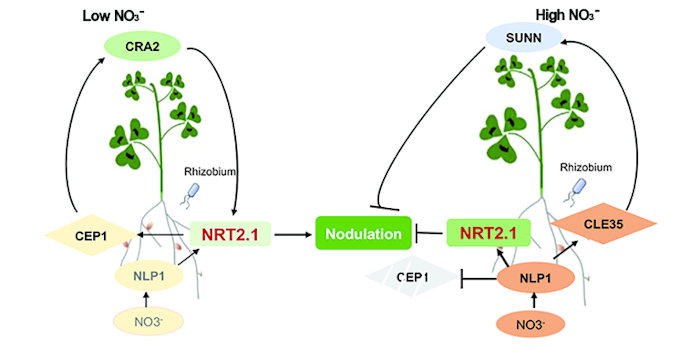Junbei Ni: The Plant Cell First Author

 Junbei Ni, first author of “The ethylene-responsive transcription factor PpERF9 represses PpRAP2.4 and PpMYB114 via histone deacetylation to inhibit anthocyanin biosynthesis in pear”
Junbei Ni, first author of “The ethylene-responsive transcription factor PpERF9 represses PpRAP2.4 and PpMYB114 via histone deacetylation to inhibit anthocyanin biosynthesis in pear”
Current Position: Associate Professor, College of Agriculture & Biotechnology, Zhejiang University
Education: 2009-2013, Zhejiang University, Bachelor’s degree; 2013-2018, Zhejiang Universtiy, Ph.D
Non-scientific Interests: swimming, flower growing
Brief bio: I developed a strong interest in pear fruit coloration research when I joined into Prof. Yuanwen Teng’s lab in Zhejiang University for undergraduate scientific research training. In September 2013, I joined into Prof. Teng’s lab to conduct my Ph.D. dissertation research. Now I am working in Zhejiang University after finishing my postdoctoral research in Prof. Teng’s lab. In previous studies, we found that the regulation of ethylene on anthocyanin biosynthesis is species-specific. Ethylene induces anthocyanin biosynthesis in most fruits, including apple. However, ethylene inhibits anthocyanin biosynthesis in pear. We found that ethylene can inhibit anthocyanin biosynthesis in pear through several pathways. Firstly, ethylene induces the expression of PpERF105, which induces the expression of the repressive R2R3-MYB transcription factor PpMYB140. PpMYB140 inhibits the expression of key anthocyanin biosynthetic structural genes by forming the repressive M(140)BW complex, and ultimately inhibiting anthocyanin biosynthesis in pear fruit. In addition, ethylene can inhibit anthocyanin biosynthesis through the PpERF9-PpTPL1 corepressor complex-mediated histone deacetylation by inhibiting the expression of PpMYB114 and PpRAP2.4, which are positive regulators of pear anthocyanin biosynthesis. Currently, I’m continuing to investigate the molecular genetic mechanisms underlying the regulation of internal and external quality of pear and mango fruit. We hope that our study can provide a theoretical basis for molecular breeding and quality improvement of pear and mango fruit.
姓 名:倪隽蓓
发表论文:The ethylene-responsive transcription factor PpERF9 represses PpRAP2.4 and PpMYB114 via histone deacetylation to inhibit anthocyanin biosynthesis in pear
目前职位:浙江大学农业与生物技术学院,副研究员
教育经历:2009-2013,浙江大学,学士;2013-2018,浙江大学,博士
兴趣爱好:游泳,养花
个人简介:我从2011年进入浙江大学农业与生物技术学院滕元文教授实验室进行本科阶段的科研训练,期间对梨果实色泽的研究产生了浓厚的兴趣。2013年9月进入滕元文教授课题组攻读博士学位,博士毕业后在该课题组继续开展博士后工作,博士后出站后留校任副研究员。在前期研究中,我们发现乙烯调控花青苷合成具有种属特异性:乙烯能诱导苹果等大多数果实花青苷的合成;而乙烯抑制梨果实花青苷的合成。我们对此进行了深入研究,发现乙烯能通过多种途径抑制梨果实花青苷的合成:乙烯诱导PpERF105的表达,PpERF105诱导抑制型R2R3-MYB转录因子PpMYB140的表达,PpMYB140则通过形成抑制型M(140)BW复合体抑制花青苷合成关键结构基因的表达,最终抑制梨果皮花青苷合成;此外,乙烯还能通过PpERF9-PpTPL1共抑制复合体介导的组蛋白去乙酰化作用抑制梨花青苷合成正调控转录因子PpMYB114和PpRAP2.4的表达,进而抑制梨果皮花青苷合成。目前,我正在以梨和芒果为研究对象,继续进行果实内在和外在品质的分子遗传控制解析,旨在为梨和芒果的分子育种和性状改良奠定理论基础。


 Yongming Chen, co-first author of
Yongming Chen, co-first author of  Yiwen Guo, co-first author of
Yiwen Guo, co-first author of 
 Ahmed Alabd, first author of “
Ahmed Alabd, first author of “ Xiaoping Xu, first author of
Xiaoping Xu, first author of 
